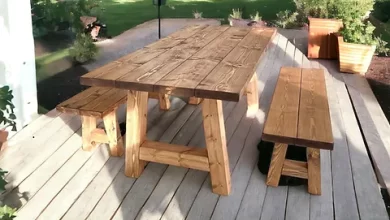12 Things to Consider When Buying a Home That Needs Work

When seeking to purchase a home that requires work, it’s simple to feel overburdened. After all, there may not appear to be much difference between a house that is ready for reconstruction and one that is being demolished. Making the incorrect decision might be quite expensive.
Not to worry! We’re here to provide you with some advice to get you started.
1. Get help: expert house inspection
First of all, you should get a professional house inspection before purchasing a property like this. Make this a typical clause that allows you to get out of the deal if a significant or serious issue is discovered during the house inspection. This can give you the option to renegotiate the purchase price, request the seller to undertake the repairs, or withdraw from the contract altogether.
Make sure you are completely aware of what the house inspection entails. In order to check for things like mould, vermin, or other issues, you might require a separate examination.
2. Look for any outdated electrical or plumbing problems
An older house that requires work could not be code-compliant. Older plumbing and electrical systems can be expensive to fix, but if they aren’t kept up with, they could accidentally create a fire or cause some leaks. It’s critical to find out how old both systems are and when they last received an update. You’ll want to know how much it will cost to replace them if they need to be. It can turn out to be a larger project than you had anticipated.
3. Look for structural or foundational issues
The foundation of the house or prospective structural problems could be related to another significant concern. Walls have a tendency to crack over time, and there may also be corrosion or moisture damage. Make sure the house doesn’t have crooked tile, uneven floors, or even obvious wall cracks by taking a good look. Additionally, make sure that the doors and windows open pretty easily. Again, you might not be willing to take on such a huge and possibly expensive undertaking.
If you’re planning for a knockdown rebuild, make sure you get the best home builder for the job.
4. Body corporate reports and strata reports
It’s crucial to review the body corporate minutes for the last 12 months if you’re considering purchasing a unit. The difficulties and work that has previously been done are both described in length in these minutes. It will also draw attention to any necessary repairs or maintenance in the future.
5. Do negotiations
A house that needs some work can be the ideal place to practice your negotiating abilities. Even if it doesn’t always work in a competitive market, you might be able to reduce the price slightly to cover part of the necessary renovations and repairs. You could negotiate additional terms into the deal or ask the seller to cover a portion of the closing costs. Utilize your real estate agent’s assistance to get you through this. They’ll be able to assist you in determining a reasonable price and perhaps even help you negotiate some of your desired outcomes.
6. Explore options for mortgage
You can beeligible for various kinds of mortgages if you plan to purchase a home that needs some renovation. With the help of a renovation loan, you can pay for the house as well as certain upgrades. Then, compared to some other loans, you can pay off those upgrades at a reduced interest rate and over a longer period of time. Here are a few of the available choices. Some of them have various income and credit score requirements.
- VA Loan for Renovation
- FHA 203 (k)
- HomeStyle Renovation Loan from Fannie Mae
- Renovation loan from Freddie Mac CHOICE
If you need assistance paying your mortgage while those home modifications are being made, a fixer-upper mortgage could be able to help. In the event that the project’s actual cost exceeds the initial estimate, more money can be available.
7. A fixer-upper purchase
Homes in need of repair are typically listed at “as-is” prices. Due to the sellers’ inability or unwillingness to adequately maintain the property, these homes frequently display neglected upkeep. Perhaps there was a death in the home, or unwanted heirs received the property after probate.
In order to determine a price for a home that needs work, sellers typically establish a sales price based on recent comparable transactions. Comparable sales, sometimes known as “comps,” involve properties that have similar age, square footage, number of bedrooms, and general neighbourhood features. After arriving at an asking price, a repair cost estimate is subtracted.
If the deal is quick or all cash, the seller might take a little bit more off the price. Profit margins and the amount of work required will determine whether it becomes a flipper house for an investor looking to make a quick profit or a home for a first-time homebuyer who is ready to put in some effort.
However, if the house spends more time on the market than the typical time for other houses to sell, there can be further issues. The amount of work actually required can be greater than the seller anticipated, or there might be fewer potential buyers for the property.
Do not automatically assume that a home’s long time on the market indicates that it is overpriced.
8. Buying a vintage in mint condition
Even if it isn’t necessarily modern or trendy, a vintage property in pristine condition could sell for a premium price. Consider Italianate, Queen Anne, Craftsman bungalows, or even folk Victorians. Residences from the 1950s through the 1960s, known as mid-century homes, are also rising in popularity. Homes that have historical significance as a result of previous owners or residents may also fall under this category.
In order to price this kind of house, a seller would presumably put a premium price pad on top of a similar sales figure. As a result, many bids can be made merely because of the attractiveness of the design. If the fixtures are original, the selling price can increase even further.
Vintage home in excellent shape could be overvalued if it has been listed for a longer period of time than others. A home of this calibre is not something every seller is keen to leave with, and some will price it so high that moving is financially advantageous.
9. Newer but out-of-date properties
These kinds of properties are common in once-thriving but now dismal neighbourhoods. Perhaps the region was overbuilt, supply outstripped demand, jobs fled the city, or more affordable tract homes started to appear a few miles elsewhere.
For whatever reason, homeowners frequently lack motivation in upgrading a house simply because fashions shift. The reason is that the house was fine when they purchased it and is still fine to sell today. They are unaware that buyers do not desire outdated properties. They seek fully furnished homes that don’t need any more work. If they have to take on a project for home improvement, they anticipate a discount.
Buyers typically won’t agree to pay top-of-market for an out-of-date property, even if it is newer and clean. However, a few adjustments, such as changing the fixtures, picking contemporary paint colours, and installing newer appliances, are sometimes enough to create interest at a better sales price.
10. Sales of foreclosures
A home that has been taken by the bank because the owners stopped making mortgage payments is known as a foreclosure. Almost always, these homes are offered for sale in their current state.
They’ve frequently been empty for long stretches of time. There won’t have been much if any, maintenance or landscaping work done by the bank. A bank cannot be held accountable for divulging information that it is unaware of.
Pre-foreclosure homes may be visible to buyers on certain well-known websites, but they aren’t necessarily for sale and may never be. This is typically only a procedure a bank will follow as soon as a seller enters default but before taking complete possession of the property.
11. Brief sales
A short sale occurs when a lender accepts less from the buyer than the full amount of the mortgage balance due. Especially when the house requires maintenance, this sale type is arguably the most misunderstood.
If the sellers are struggling to pay their mortgage, they probably won’t be able to afford to make any improvements to the property, and the seller’s lender is unlikely to work with a short sale unless the price is competitive with the market at the time.
If a bank forecloses on a home rather than short-selling it, it might benefit financially. The investor will insist on a net to match the foreclosure net, thus the broker price opinion (BPO) value won’t matter in that scenario.
12. Packrat Homes
The worst housing situation may be in slums. These are the homes where you’ll have to manoeuvre through narrow passageways surrounded by piles of household goods. Sometimes it’s impossible to open the door to the bedroom because it’s so stuffed with furniture, boxes, and rubbish. Hoarders and packrats accumulate and store a lot of things.
You might find mounds of dead rodents or moisture issues that have gone unnoticed for years in a packrat house that has been neglected for a long time. If you’re lucky, renting a couple of 30-yard dumpsters may remove the debris, but any underlying issues may be far worse.
These homes frequently have their sale prices drastically reduced.
If you find this article helpful, please let us know what you think in the comments below!








